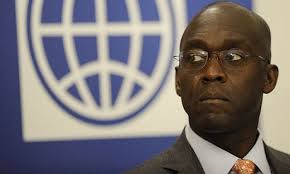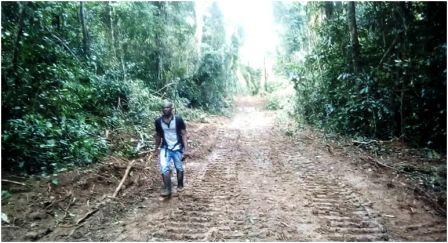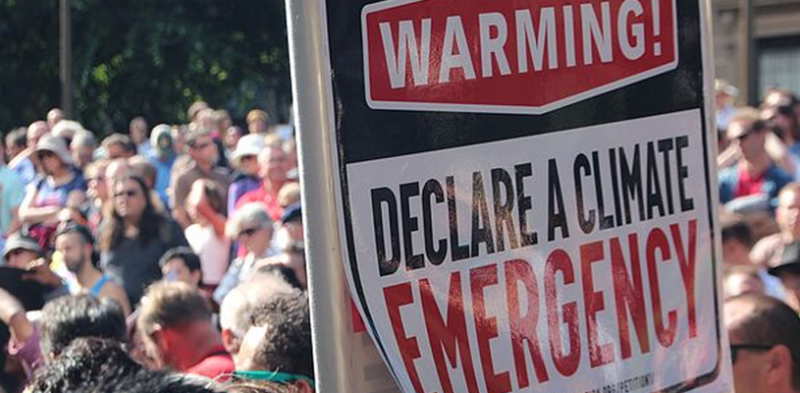Listen More Closely to Africa’s Voice on Climate Change
As more than 120 world leaders converge on New York this week for an unprecedented UN climate summit, one highly significant voice needs to be heard. That voice belongs to Africa. (Photo: Makhtar Diop, World Bank Vice President for the Africa Region)
In all the global discussions around rising sea levels, shrinking rain forests, imperiled species and biodiversity, green bonds and carbon prices, Africa’s unique stake and contribution to a global climate strategy needs to be more front and center. This is only right for a continent that has contributed the least to the profound changes underway in the Earth’s climate but whose people will suffer its withering impact the most.
Consider that Africa is responsible for only 3.8 percent of global greenhouse gas emissions yet from the Sahel to the Horn of Africa to the south of the continent, African countries experience first-hand the devastating effects of increasingly severe droughts and floods and more extreme weather patterns that scorch or drown their crops. Africa’s political and business leaders are already committed to a climate-resilient growth path, yet the path promises to be bumpy.
Recent World Bank research outlines a disturbing scenario for Sub-Saharan Africa in a 2°C warmer world, forecasting dramatic effects on agriculture and food production in a region where 80 percent of Africans rely on agriculture to make ends meet for their families. Consequently, we cannot separate agriculture and food security from climate change. Agriculture in Africa accounts for 30-40 percent of GDP. A 1.5°C to 2°C increase in temperature by the 2030s and 2040s will lead to a 40- to 80-percent reduction in the area of land suitable for growing maize, millet and sorghum. These cereals are the mainstay of African diets. They provide the bulk of people’s daily food intake especially in the drylands of the Sahel and the Horn of Africa.
We must also amplify the links between climate change and conflict. In a groundbreaking 2013 paper published in Science magazine, economists Solomon Hsiang, Marshall Burke, and Edward Miguel argued that there is strong evidence linking climatic events to human conflict in Africa and across all other major regions of the world. The magnitude of climate change is substantial they wrote: for each one standard deviation change in climate toward warmer temperatures or more extreme rainfall, median estimates indicate that the frequency of interpersonal violence rises 4% and the frequency of intergroup conflict rises 14%.
Africa’s harsher climate of the future will also change traditional livelihoods. As temperatures rise, Africa’s iconic savanna grasslands will dry up and threaten the livelihoods of their pastoral communities. Given the sensitivity of livestock—their goats, cows, and other animals—to extreme heat, too little water and feed, and disease, pastoralism as a centuries-old way of life is likely to be in danger.
Rainfall patterns will dramatically change; droughts and floods will be more frequent and lead to a 3-percent expansion in total arid areas. Coastal populations in Guinea-Bissau, Gambia and Mozambique would face the greatest risk of inundation and storm surges. Coastal erosion represents a major threat as a large part of Africa’s GDP derives from activities such as fishing, tourism and trade. Entire cities and villages along the coast – capital cities and crucial deep-sea ports — could be wiped out due to rising sea-levels. Countries such as Togo, Ghana and Mozambique could lose more than 50 percent of their coastal GDP, according to recent estimates.
Sustainable management of the region’s rich natural resources—forests, water, land—can contribute to the storage of carbon, while supporting livelihoods and generating economic benefits. Madagascar, one of the poorest countries in the world, also harbors 5 percent of the world’s known biodiversity. Before the country’s political crisis, nature-based tourism was a $500-million industry, growing at 10 percent per year. But the island is also on the list of the most climate change-vulnerable countries which will have a significant impact on its biodiversity.
Africa is one of the world’s fastest-urbanizing continents. Parched rural hinterlands will steadily force people to move to already-crowded cities, creating overcrowding, stressing supplies of safe drinking water and drainage and sanitation.
At the African Union Summit in Malabo, last June, Tanzanian President Jakaya Kikwete reminded his audience that the “effects of climate change are likely to strike to the detriment of the whole continent”. He added that Africa now requires in excess of US$15 billion per year to combat climate change, a figure that continues to rise.
The good news is that Africa is uniquely well positioned to build resilience, especially in energy and agriculture, and has already embraced sustainability. Being green is good for business. In Kenya, small farmers are now earning carbon credits from sustainable farming. In South Africa, the city of Johannesburg recently issued its first green city bond to finance low-carbon infrastructure. In Mauritania, solar energy now powers 30 percent of Nouakchott’s energy use. In Africa, wind and solar potential can be over 1,000 GW but needs to be fully exploited.
The continent has embarked on a clean power revolution that brings more electricity to people’s homes, businesses, clinics and schools. With only one in three Africans having access to energy, the task is urgent. Africa has tremendous untapped hydro, geothermal, and solar power and must be developed to provide the electricity needed to offer sustained – and green – growth for the benefit of all its citizens.
The World Bank is stepping up to the challenge. We are financing transformational projects that attack poverty from multiple angles. We are supporting governments to promote “climate-smart agriculture” so that African farmers can achieve higher yields and make their farming more resilient to the changing climate. In DRC, a $73.1-million technical assistance project will pave the way to bring hydroelectric power to 9 million people.
These interventions are just a starting point – not nearly enough to address the monumental energy needs of the continent. Though prices for renewables have declined significantly in the past decade, these energy sources are still costly. The green energy revolution in African cannot be achieved without financial support of the international community, to bring down the costs of adopting these clean technologies.
The warning signs are clear: climate change under even the 2°C scenario is a menacing threat to sustainable development in Africa. These impacts could potentially overwhelm existing development efforts. We ignore the early warning signs at our collective peril. But, through collective action, we can ensure a climate-resilient future that benefits all Africans and the entire planet.
Makhtar Diop, World Bank Vice President for the Africa Region
Stay with Sierra Express Media, for your trusted place in news!
© 2014, https:. All rights reserved.






